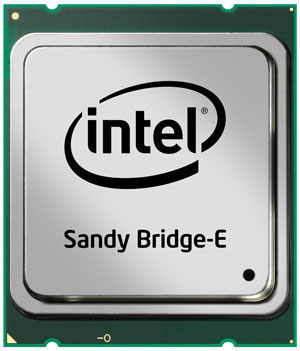Intel Core i7-3820 Quad-Core Sandy Bridge-E CPU Review
A few weeks back, we took a look at the Core i7-3960X, Intel’s first desktop processor to feature the company’s Sandy Bridge-E microarchitecture. If you're unfamiliar with the chip, Sandy Bridge-E is the ‘tock’ in Intel’s tick-tock release schedule cadence that bridges the gap between first-gen Sandy Bridge-based processors like the Core i7-2700K and next year’s Ivy Bridge microarchitecture. Sandy Bridge-E shares many of the same features of the original Sandy Bridge microarchitecture, but as the “E” denotes, SBE is a more extreme derivative, targeted at enthusiasts.
In our launch coverage of the Intel Core i7-3960X, we take a deep-dive look at Sandy Bridge-E and detail many of its features, like its 40 integrated PCIe 3.0-class lanes, quad-channel memory controller configuration, new socket and chipset, 32nm manufacturing process, and many others. We’d highly recommend checking out that article, because it lays all of the groundwork necessary to fully appreciate the processor we’ll be showing you today, the Core i7-3820.
We briefly discussed the Core i7-3820 in our Core i7-3960X coverage, but didn’t have a chip on hand for testing. The Core i7-3820 is based on the very same die as the higher-end Core i7-3960X, but two of its cores (and some cache) have been disabled. Whereas the Core i7-3960X has six active cores and 15MB of shared SmartCache, the Core i7-3820 has four active cores and 10MB of shared cache. There are a few other difference as well, but fundamentally the two processors are very similar. Full specifications are below, followed by a few more details, performance, and even a little overclocking...
|
|
Quad-Core Processing: Runs 4 independent processor cores in one physical package Base Processor Frequency: 3.60 GHz Massive PCI Express Bandwidth: 40 lanes of PCIe supported through the processor Intel Turbo Boost Technology: Dynamically increases the processor frequency up to 3.90GHz when applications demand more performance. Speed when you need it, energy efficiency when you don’t. Intel Hyper-Threading Technology: 8 threads provide unprecedented processing capability for better multi-tasking and threaded applications. Do more with less wait time. Intel Smart Cache: Up to 10MB of shared cached allows faster access to your data by enabling dynamic and efficient allocation of the cache to match the needs of each core significantly reducing latency to frequently used data and improving performance. Overclocking Enabled: Core (Turbo) and DDR3 ratios are partially unlocked for ease of overclocking Integrated Memory Controller: Supports 4 channels of DDR3-1600 memory with 1 DIMM per channel. Support for XMP memory. See this site for certified XMP memory. |


Intel LGA 2011 Sandy Bridge-E Processor, Top and Bottom
The Core i7-3820 differs from the Core i7-3960X in a few ways. For one, the 3820 is not an ‘Extreme Edition’ part, which is to say it is not fully unlocked. Rather, the Core i7-3820 is only partially unlocked. Like first-gen, non-K series Sandy Bridge-based processors (with Turbo mode support), the Core i7-3820’s peak Turbo multiplier can be increased by only four speed bins above stock, for a maximum of 4.3GHz, disregarding the effects of base clock manipulation. More on overclocking a little later, though.
The Core i7-3820’s frequencies also differ from the Core i7-3960X. The 3960X has a base clock speed of 3.3GHz, with a max Turbo clock of 3.9GHz. The Core i7-3820 offers the same 3.9GHz max Turbo frequency, but its base clock is somewhat higher at 3.6GHz. That extra 300MHz may sound nice but in reality, provided you've got adequate power and cooling, Sandy Bridge or SBE-based processors rarely operate at their base clock frequency and almost always are in some state of Turbo.
Physically, the Core i7-3820 looks just like other Sandy Bridge-E based processors for the LGA2011 socket and they require the very same X79 Express chipset and cooler, and have the same 130W TDP.
Considering the Core i7-3820 offers “only” four cores, you may be wondering what, if any, benefits it offers over first-gen Sandy Bridge-based processors. Well, the Core i7-3820 offers more cutting-edge integrated PCI Express connectivity, more memory bandwidth (quad-channel vs. dual-channel), more cache, and it’s paired to Intel’s latest chipset. What those benefits offer in terms of additional performance, is what we’ll try to show you on the pages ahead...






